Field Notes: What’s in the Woods Today? March 18 2019
April 11, 2019 11:56 am
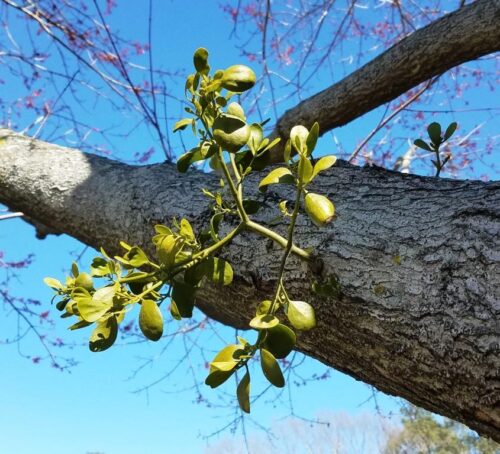
By Area Forester Lisa Deaton
Parasitic Plants
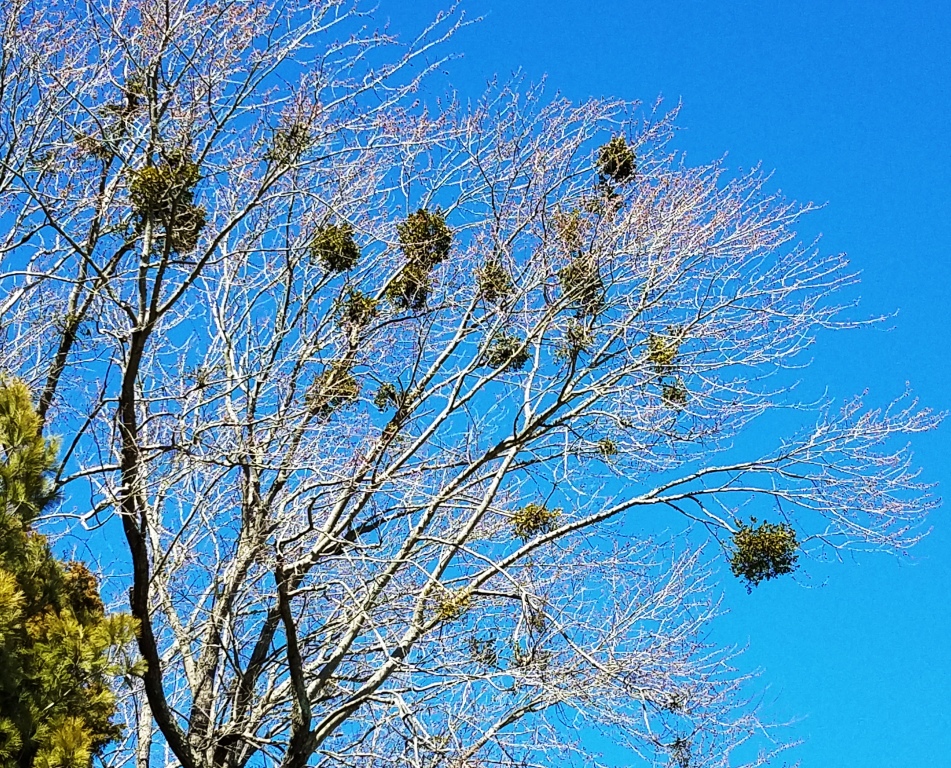 American or eastern mistletoe, Phoradendrum leucarpum, is a common parasite of oaks and maples in the Coastal Plain of Virginia. Birds carry the sticky white mistletoe seeds from tree to tree. The seeds sprout and their roots grow into the host tree to extract water and nutrients.
American or eastern mistletoe, Phoradendrum leucarpum, is a common parasite of oaks and maples in the Coastal Plain of Virginia. Birds carry the sticky white mistletoe seeds from tree to tree. The seeds sprout and their roots grow into the host tree to extract water and nutrients.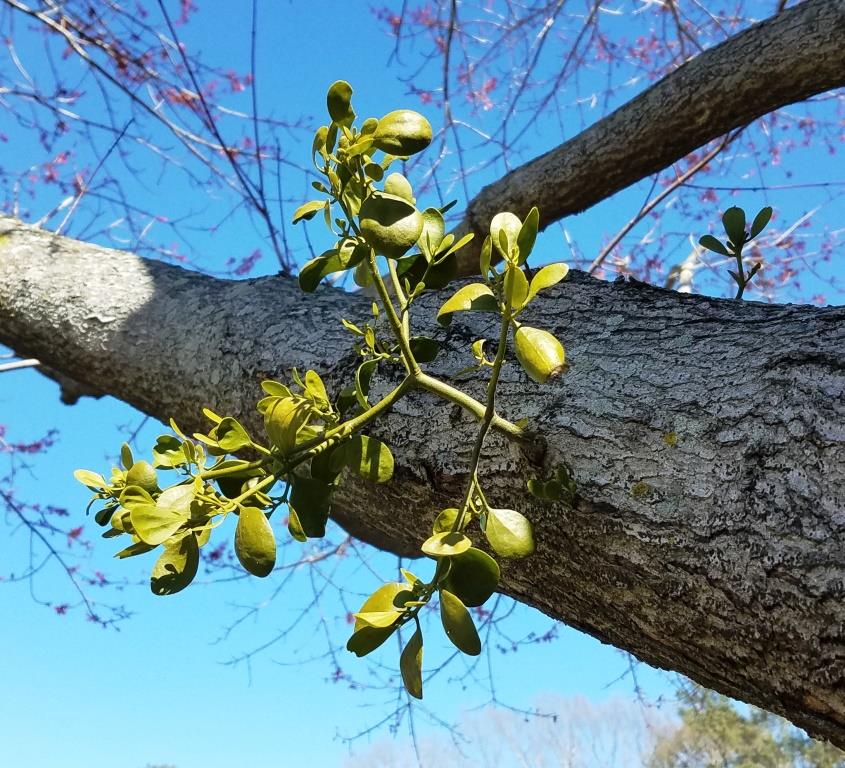
In our eastern deciduous forests, winter provides a clearer view into the woods. The deciduous leaves are gone, and we can see all of the things hidden by summertime foliage.
For instance, it was quite a surprise to see this eastern redcedar tree, Juniperus virginiana, growing in a black walnut branch 20 feet above the ground (center of photo above). This is especially unusual because black walnut, Juglans nigra, is famous for its competitive advantage of releasing a juglone chemical that is toxic to plants growing over the top of its root system. Evidently, this branch presented the perfect sprouting conditions for an eastern redcedar berry. Cedar berries are not sticky, but they sprout more readily after passing through the digestive tract of birds and animals. This cedar has thrived for 4-5 years according to the landowner.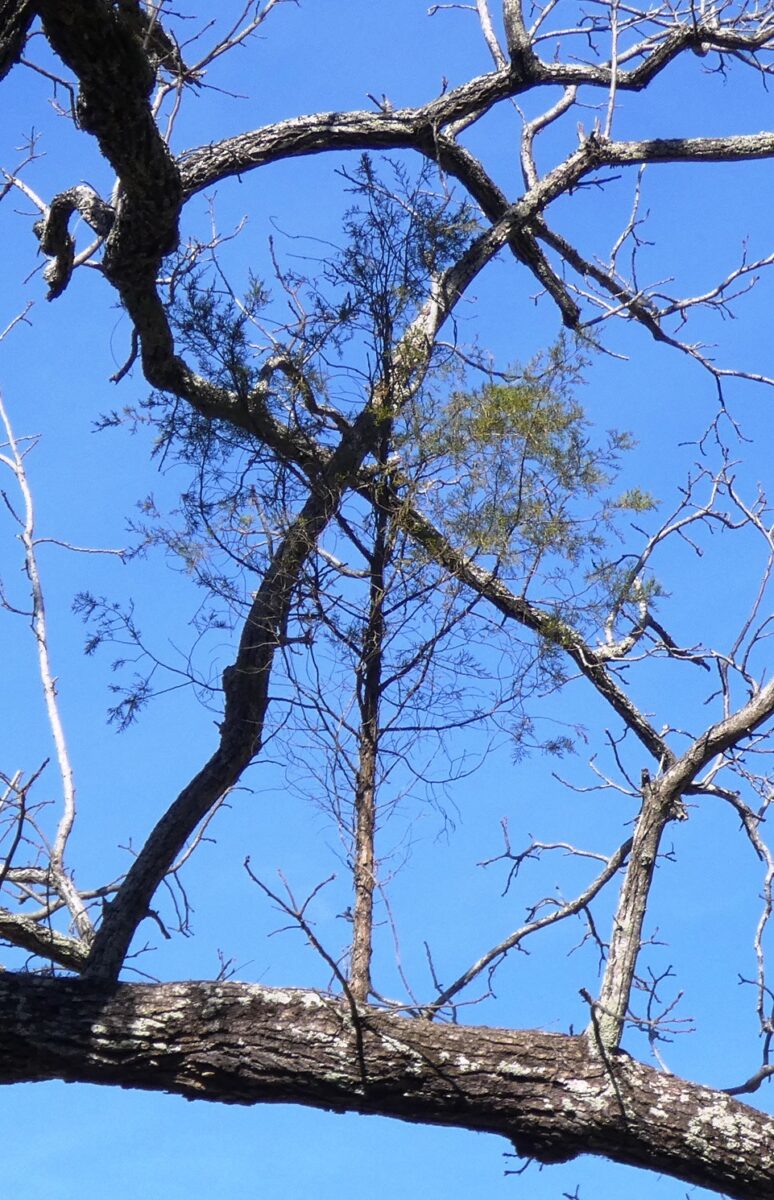
The burl on this scarlet oak, Quercus coccinia, was also easy to see from a long distance away (below). Burls are not parasites; they are wood formations in response to injuries or stress such as a virus, fungus, mold, insect or a gnarly combination of stressors. 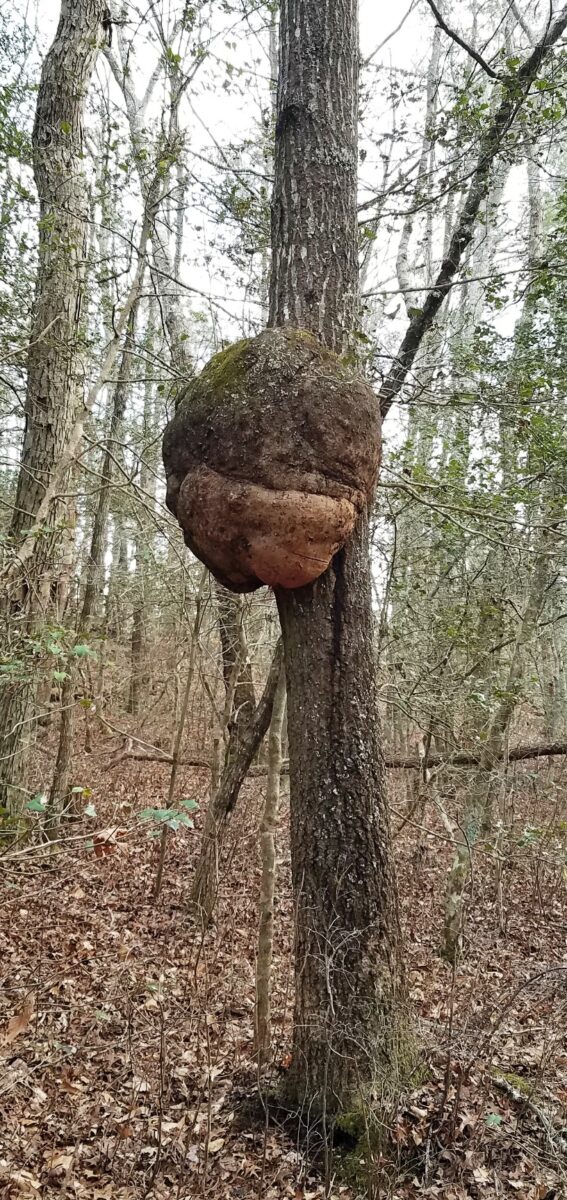
Tags: Black Walnut, Tree Health
Category: Forest Health
